Whether you’re renovating your home or you just need to replace an old faucet, there are a few questions you can ask to help identify the right model.
It may be tempting to choose a nice-looking faucet out of a catalogue. But, unfortunately, looks aren’t everything when it comes to choosing the right faucet for your whole family. By asking yourself five simple questions, you can be sure to choose the faucet that meets all your needs, so that it will be a long time before you need to replace it again.
- Who will be using the faucet?
- Where will the faucet be located?
- What type of sink do you have?
- How important is sustainability?
- What’s your budget?
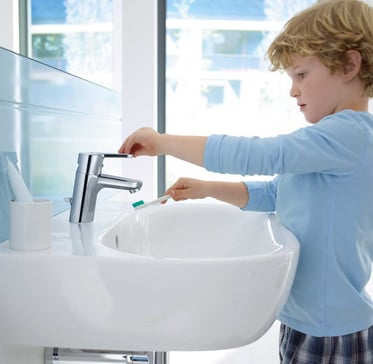
When selecting a faucet, it is important to consider, who will be using it.
1. Who will be using the faucet?
Start by considering the needs of your family. Do you have small children or grandparents living with you? Does anyone have special needs? If so, safety and usability may be high priorities. The shape and colour of the faucet can make it easier to control for those with reduced eyesight, small hands or undeveloped motor skills.
The HANSAFIT for example, have an easy-grip black lever and an eco-button for not only limiting water flow for increased sustainability but also water temperature to prevent scalding, a common concern for families. The lock can be bypassed by pushing the button when there’s need for hotter water or more water flow. Specially designed for the elderly, the HANSACARE product families feature ergonomic design and clear hot and cold markings for people with limited eyesight.
Automatic or touchless faucets are a good option for both children and the elderly as they can help prevent any germs lingering on faucet controls from sticking to hands. This improves health and hygiene in the home and keeps everyone a little safer.
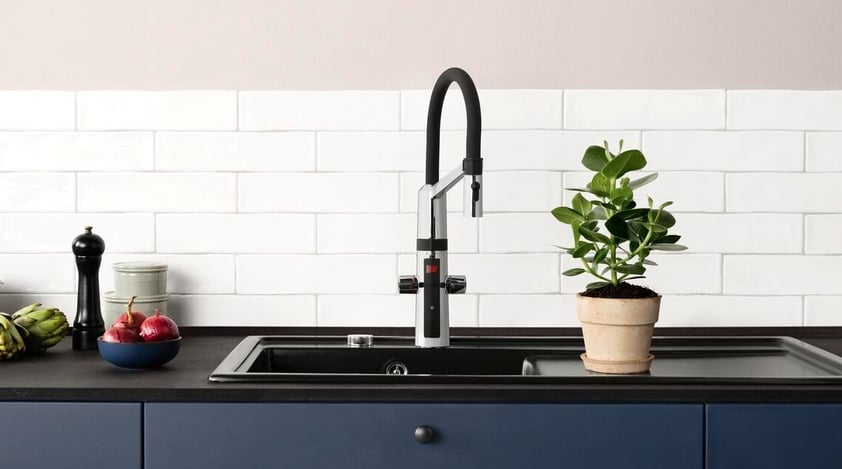
When choosing a faucet for kitchen or bathroom, consider whether or not a dishwasher valve is needed.
2. Where will the faucet be located?
If the faucet will be in the kitchen, whether you have a dishwasher is important. If you do, you will need a model with a dishwasher valve. Also, consider whether you need to wash large pots and pans by hand. If so, you will need a higher spout.
Discover our kitchen faucets here
If the faucet is for the bathroom, again, consider whether you need a washing machine valve. If the faucet is for the utility or laundry room, what tasks will you use it for? If you wash large machinery or equipment, you will need a higher spout. If you use the room for changing or bathing your baby, perhaps a washbasin faucet with a Bidetta hand shower such as HANSADESIGNO Style 51682281 is a good idea.
In all three cases, it’s important to consider how much space is above and behind the basin. Is there a cabinet just above? How close is the wall? These variables could place limits on the height or type of faucet control you can choose.
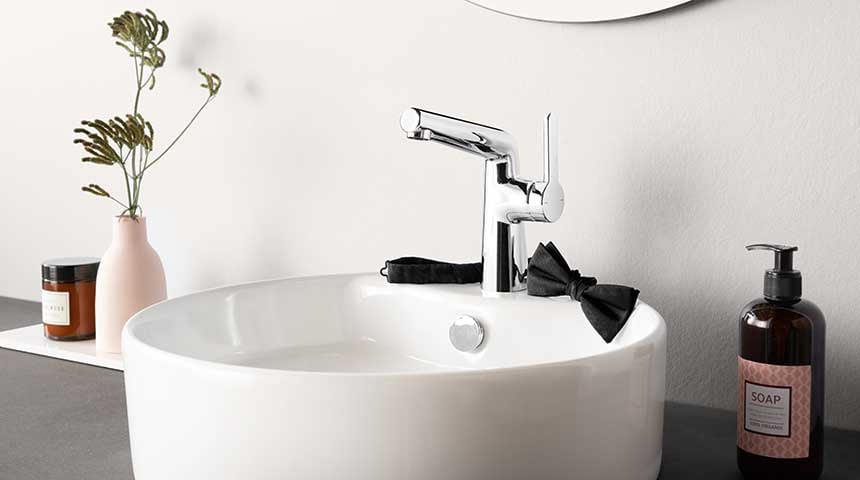
HANSADESIGNO washbasin faucet combined with a vessel sink with integrated faucet installation hole.
3. What type of sink do you have?
If your new faucet is part of a renovation project, you may be choosing the basin together with the faucet. If you are replacing your faucet, the type of basin you have should guide your faucet choice. Does the sink sit on top of the countertop (a vessel sink) or is it integrated? Is it attached to the wall? Whichever type of sink you have, the key is to balance the proportion of the faucet to the sink.
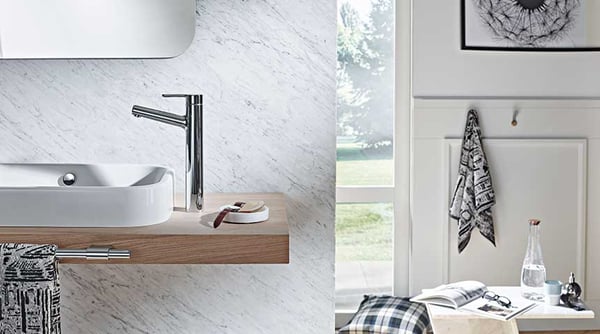
Vessel sink with higher body faucet HANSADESIGNO Style 51692283
If it is a vessel sink, you will need a faucet with a higher body, such as the HANSADESIGNO Style 51692283. A wall-mounted faucet could also be a good option for the vessel sink, providing the right installation conditions behind the wall. (Check with an installer to be sure.) If the sink is integrated, this opens up for many more options as shorter bodies work just as well.
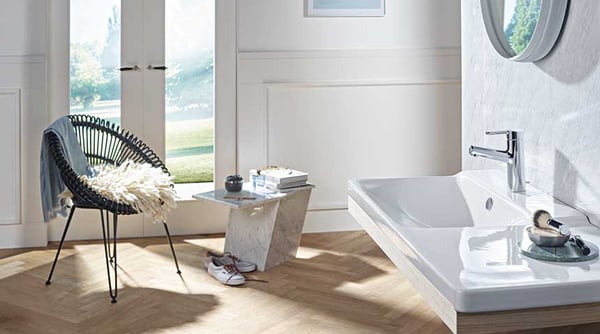
Integrated sink with small HANSADESIGNO Style washbasin faucet.
Also, consider how much space is between the faucet hole and the wall. You may need to choose a faucet with a limited turning angle so that nothing will get in the way of controlling your faucet.
4. How important is sustainability?
A recent study shows that 61% of European consumers are concerned about the state of the environment. The further north you go, the more this concern turns into water-saving awareness. An average of 63% of people in the Nordics consider themselves to be eco-conscious, which reflects in their preference for sanitary fittings.
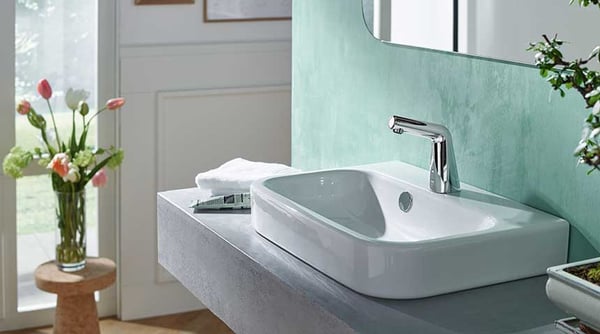
Touchless faucets can save up to 50% in water consumption compared to traditional lever faucets. In the picture: HANSADESIGNO Style touchless faucet
Anyone can save water by choosing the right faucet. Touchless faucets drastically reduce water and energy consumption as the water only runs when needed. In fact, SMART faucets can reduce water wastage by up to 50%.
Did you know:
All HANSA lever faucets come with the possibility to add water flow limitations. Just ask your installer to take care of this during installation.
5. What’s your budget?
Many people believe that SMART faucets are more expensive than manual faucets, but this isn’t always the case, with a range of SMART faucets available at different price points. And, if you offset the water savings, the cost comes down.
Try to determine where you are budget-wise. Are you looking for something low-budget, mid-range or premium? There are plenty of excellent faucets in each category and this can help guide your search from the outset.

-block-desktop-860x480.jpg?width=940&name=40210_Hansa_Vantis_Style_Basin01_Hansa_Vari_oh_IR.tif(1)-block-desktop-860x480.jpg)

-block-desktop-860x480%20(1).jpg?width=940&name=Oras_Romantic_V3.jpg(1)-block-desktop-860x480%20(1).jpg)






